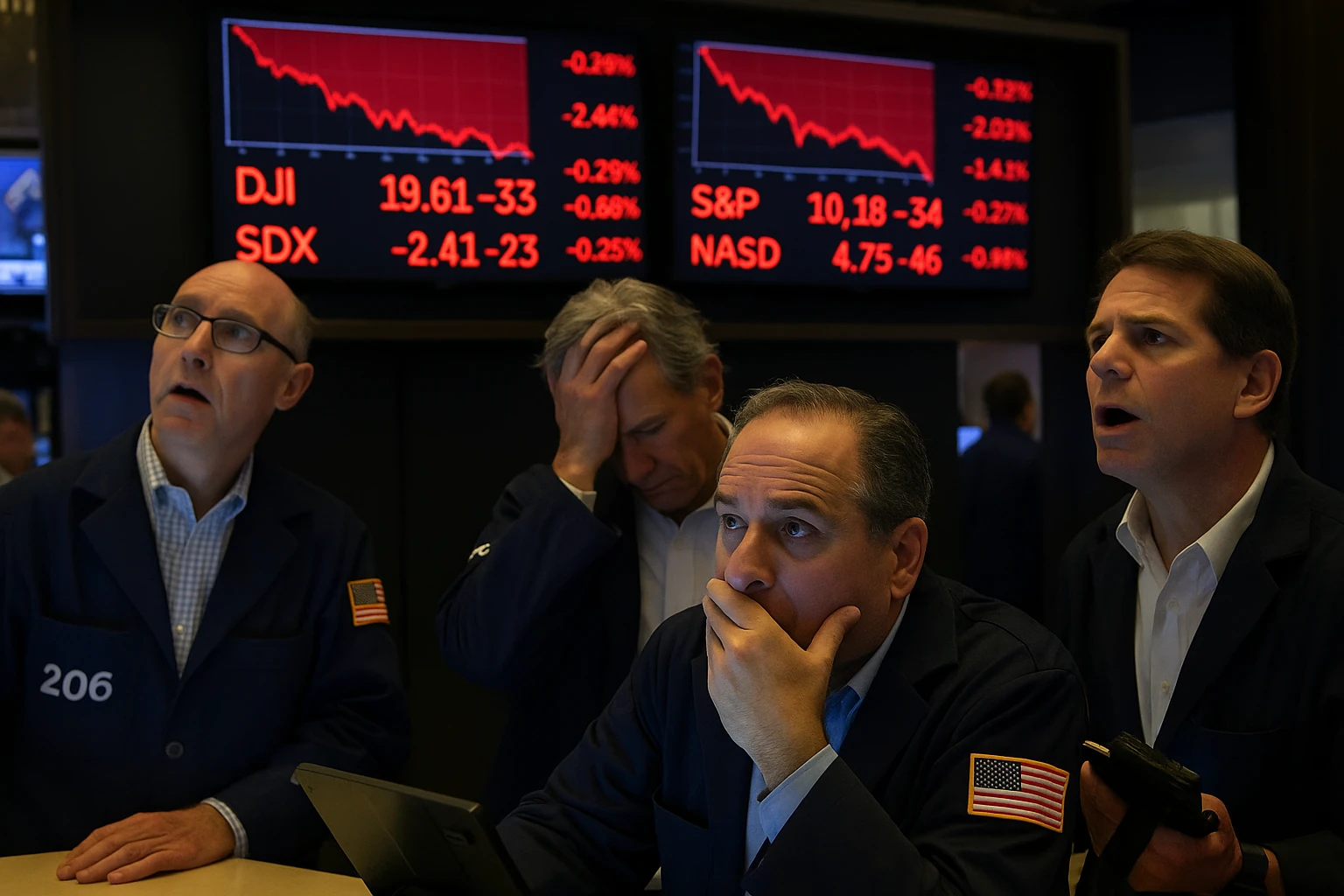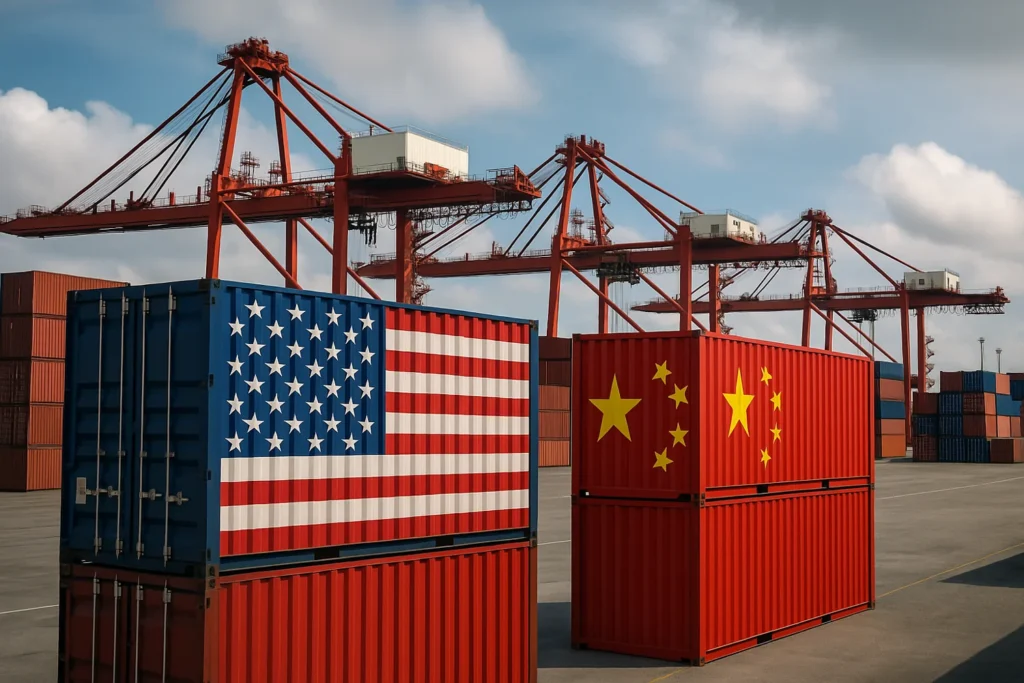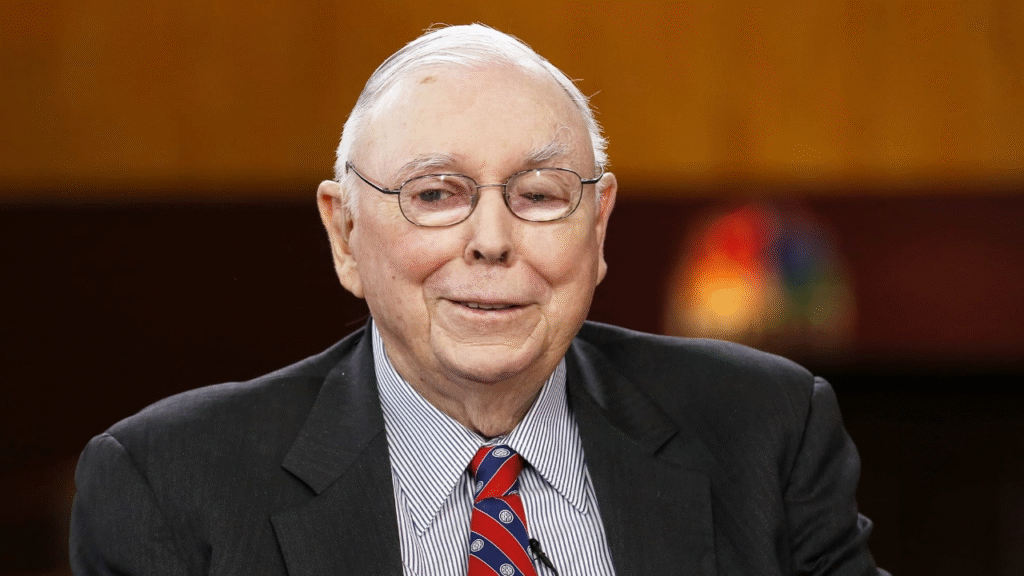When President Trump announced 100% tariffs on Chinese imports, markets did not merely react — they imploded. The S&P 500 tumbled over 2%, its sharpest fall since April. The Dow erased nearly 800 points in hours, while Nasdaq tech giants bled billions in market value. The focus keyphrase, US tariffs on Chinese imports, became more than an economic measure — it became a symbol of political brinkmanship that risks pushing the world into stagflation.
Context: the trade war’s latest explosion
Trump’s latest tariff order covers almost all Chinese goods — from electronics and textiles to cars and semiconductors. He framed it as a “defense of American jobs” and accused Beijing of currency manipulation and intellectual property theft. But this rhetoric is not new. It’s the revival of the 2018–2020 trade war that once crippled global supply chains and cost US consumers an estimated $80 billion in higher prices.
Wall Street knows this history. The market’s response was swift and brutal. Investors fled equities for safe havens: gold climbed above $2,450 per ounce, Treasury yields plunged, and the dollar strengthened. Economists now warn that the move could shave 0.5 percentage points off global GDP next year, echoing the IMF’s earlier caution about “weaponized trade policy.”
Oppositional Argument: political theater disguised as patriotism
The mainstream narrative paints Trump’s move as a patriotic defense of industry. But let’s be honest — this is political theater. With elections months away, the White House is betting on populist economics to distract from a shaky fiscal outlook. Tariffs play well in Rust Belt rallies; they don’t fix manufacturing.
Behind the patriotic slogans lies a dangerous illusion: that punishing imports automatically revives domestic production. Yet the reality is that US factories depend on Chinese components. The US tariffs on Chinese imports could therefore raise costs for the very businesses they claim to protect. It’s protectionism in name, inflation in practice.
Analytical Breakdown: the ripple effects
Let’s trace the consequences. First, inflation. Tariffs are a tax on consumers. The last trade war raised prices on everything from washing machines to smartphones. Expect the same again — only worse, because the scope is total.
Second, supply chains. US companies spent years rebuilding after COVID disruptions. Now, another shock looms. Firms like Apple, Tesla, and Qualcomm will either eat the costs or pass them on. Manufacturing may shift to Vietnam or Mexico, but relocation isn’t instant — it’s costly, messy, and uncertain.
Third, global response. China has already hinted at retaliation. State media in Beijing called the tariffs “economic bullying” and suggested counter-measures on US agricultural exports. Europe and Japan are uneasy too; no one wants to get caught in the crossfire of an American-Chinese tariff duel that destabilizes the global system.
The markets’ verdict? Brutal realism. The US tariffs on Chinese imports erased nearly $1.8 trillion in global equity value in 24 hours. Analysts at Morgan Stanley warn that a full trade decoupling could trigger a global recession within twelve months.
Human Perspective: how ordinary Americans pay
For the average American, tariffs aren’t abstract policy — they’re grocery bills, rent increases, and job cuts. A Wisconsin electronics retailer told CNBC that wholesale prices jumped 20% overnight. Logistics firms are reporting canceled shipments, while port workers in Los Angeles and Long Beach face reduced hours.
This is the unseen cost of political bravado. Economists describe it as “silent inflation,” the erosion of purchasing power that creeps into daily life. A family buying a $1,200 laptop next month might pay $1,500 instead — not because of innovation, but because of politics.
Counterarguments
Supporters of Trump’s policy argue that China’s trade practices justify strong retaliation. True — Beijing subsidizes exports and restricts market access. Yet retaliation without reform achieves little. The 2018 tariffs didn’t change China’s behavior; they pushed it to strengthen ties with Russia and the Global South. The United States risks repeating that strategic mistake — isolating itself while rivals build alternatives.
Moreover, US allies resent being collateral damage. European companies using Chinese components for re-export to the US will face double tariffs. This isn’t strategy; it’s economic self-harm.
Conclusion: America is taxing itself in the name of strength
This isn’t economic policy — it’s campaign choreography. By weaponizing trade, Washington is gambling with its own markets and citizens’ savings. Wall Street’s plunge is not just a financial tremor but a warning: when populism dictates policy, markets lose faith.
Trump’s 100% tariffs may look tough on paper, but in practice they are a self-inflicted wound — the kind that weakens America’s credibility abroad and its stability at home. The next crisis won’t come from Beijing’s retaliation; it will come from Main Street’s despair.
External Links
76 views






